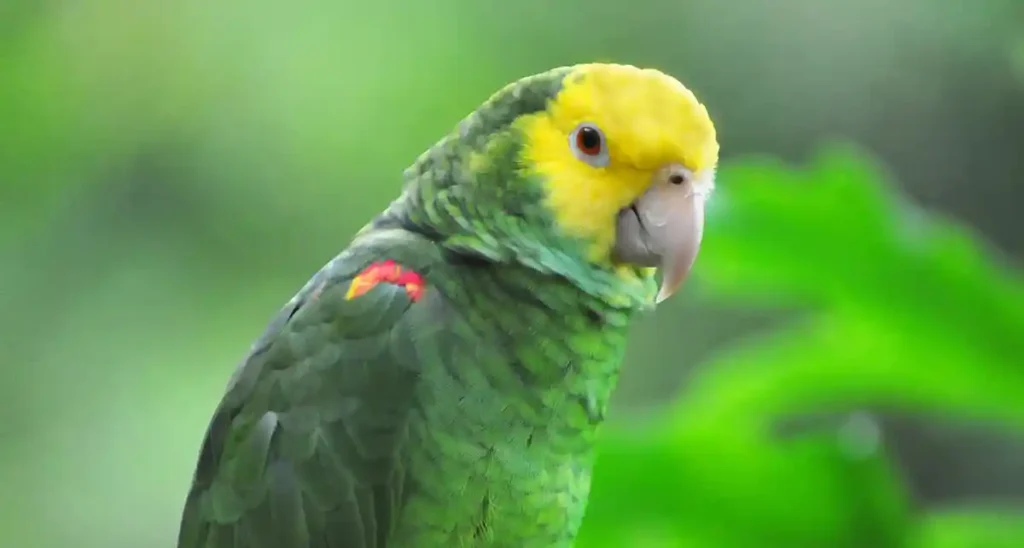
The Yellow-Headed Amazon, an exotic and charming bird, is often sought after for its vibrant yellow head and lively personality. This parrot, with its scientific name Amazona oratrix, is a part of the Amazon family. Before accessing the rest of this article, make sure your browser is ready to explore the world of these wonderful and joyful birds.
Understanding the Yellow-Headed Amazon
Are you aware that there are several names for this parrot? It’s also known as the yellow-headed parrot or the double yellow-headed amazon. The name “yellow-headed” is not simply for its appearance; it reflects the bird’s personality, colorful and vibrant, capturing the essence of this parrot species.
Known subspecies
These parrot species has two recognized subspecies:
- Amazona oratrix oratrix, also called Amazona oratrix magna
- Amazona oratrix belizensis.
These subspecies primarily differ in their geographical distribution and minor variations in appearance.
Formerly the Amazona oratrix tresmariae was considered a subspecies. According to the American Ornithological Society, Smith et al (2022) considered it a separate species: the Amazona tresmariae or Tres Marias amazon.
In this document, the Amazona oratrix hondurensis, commonly related to the Amazona oratrix belizensis, is considered a subspecies of the yellow-crowned parrot (Amazona ochrocephala).
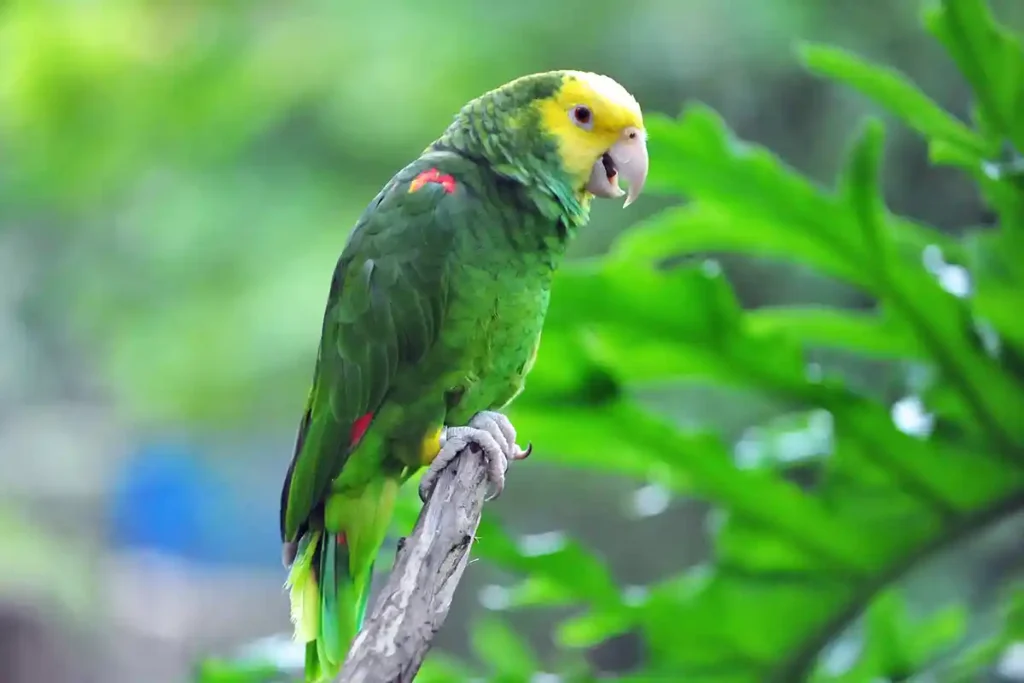
Geographical Distribution of the Yellow-Headed Parrot
The yellow-headed amazon finds its home primarily in Central America and South America, with a noticeable population in Mexico. They are also found in areas of Belize, Guatemala, and Honduras. The Tres Marias, a group of islands in Mexico, also houses the Amazona tresmariae, formerly Amazona oratrix tresmariae.
This bird adapts well to a variety of habitats, from mangrove forests to savannah. In Mexico’s Sula Valley, these parrots are commonly found among the trees, particularly in the nesting trees that are essential for their survival.
The Yellow-Headed Amazon’s Appearance and Comparison with Other Species
The most striking feature of the yellow-headed parrot is, of course, its yellow head. The contrast between the vibrant yellow of the head and the green body makes it one of the most recognizable parrots. Its tail feathers are usually blue-tipped, adding to its vibrant appearance. One interesting fact about this bird is its length. Adult size is typically around 15 to 17 inches, making the Amazona oratrix adult size comparatively larger than many other parrots. Its crown and nape also turn yellow as it matures, making adult coloration a sight to behold. This characteristic sometimes causes it to be confused with the yellow-naped amazon, known as Amazona auropalliata.
In comparison, the Amazona ochrocephala, commonly known as the yellow-crowned amazon, native to Central America, has a yellow crown, but lacks the extensive yellow coloration of the head found in the yellow-headed. This species is slightly smaller, typically measuring between 13 to 15 inches in length.

The African grey parrot, another popular family member in the parrot kingdom, is quite different in appearance. As its name suggests, it sports a predominantly gray coloration with a distinctive red tail. It shares the same impressive ability to mimic human speech, but when it comes to size, it’s slightly smaller than the yellow-headed amazon parrot.
The yellow-headed amazon species is not homogenous and has several subspecies, each having slightly different appearances and found in different areas. For instance, the Tres Marias (formerly subspecies), Amazona oratrix tresmariae, is found in the Tres Marias Islands in Mexico and is recognized by its more extensive yellow head and larger size.
The populations in the Bay Islands of Honduras and Belize, often considered a Central American subspecies, have less yellow on their heads and a brighter green body. Despite these differences, all yellow-headed amazons are considered the same species, highlighting the diversity within this fascinating parrot.
Interestingly, in some areas, these birds are seen as a crop pest due to their habit of feeding on crops, while in others, they are appreciated for their ability to control certain pests. Their nesting habits are also intriguing as they usually nest in tree cavities, a behavior common to many parrots.
In terms of their presence in the United States, it’s important to mention that while they are not native, they have established populations in certain states like Texas, California, and Florida due to escape or release from captivity. Despite this, their population number in the wild is most significant in Central and South American countries, including Mexico, Belize, and Honduras.
The Behavior of the Yellow-Headed Parrot
Yellow-headed amazons are known for their complex behaviors. They exhibit a wide range of calls and sounds, making them quite the talkers among the parrot kingdom. These sounds, along with their ability to mimic human speech, have made them popular in the pet trade.
The yellow-headed amazon parrot is also known for being a frugivore, meaning they primarily eat fruits such as berries. However, they also feed on nuts and leaf buds. Their diet is quite a variety, ensuring they get a balanced mix of nutrients.
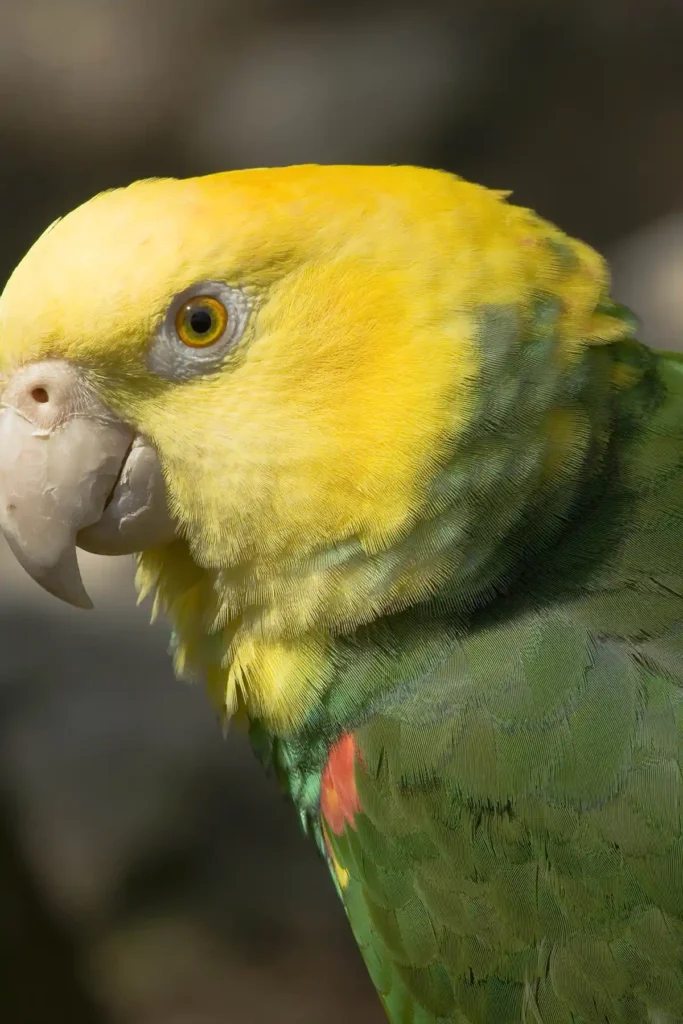
Conservation Status
Unfortunately, the yellow-headed parrot is listed as endangered on the IUCN Red List. The main threats to this species include habitat destruction, habitat loss, nest poaching, and the pet trade. These factors have resulted in a decreasing population size.
Efforts are underway to conserve this species. Organizations such as the World Parrot Trust and BirdLife International are working tirelessly to protect these birds and their habitats.
The Yellow-Headed Amazon as Pets
Owing to their colorful appearance and ability to mimic human speech, yellow-headed amazons have become popular in the pet trade. However, owning one requires careful attention and a lot of care.
These birds need cages that are large enough for them to spread their wings and exercise. Cage materials should be strong enough to withstand their strong beak. In addition to the cage, a play gym is often recommended for these active birds.
Socialization is another important aspect of their care. Yellow-headed amazons crave human company and enjoy spending time with their owners. They need toys for mental stimulation and exercise. It is important to remember that these birds are social creatures. They thrive in environments where they can interact and communicate, whether with their human family members or other pets.
However, owning a yellow-headed parrot is not all fun and games. They require a specific diet to stay healthy. Being natural frugivores, their diet should include a variety of fresh fruits, vegetables, and some seeds. Vitamin A is particularly important for these parrots, and deficiency can lead to serious health problems such as weight loss or issues with their feathers.
Just like the attention you give to their diet, their living conditions should also be optimal. These birds are native to warm, humid environments, and mimicking these conditions at home can help them thrive. This involves maintaining appropriate temperature and humidity levels in their cage and providing them with plenty of water for drinking and bathing.
Finally, prospective owners must remember that these parrots are a long-term commitment. With a lifespan that often surpasses 60 years, these are not pets that can be easily rehomed or neglected. They require consistent care, attention, and companionship throughout their lives. In return, they offer a unique, rewarding, and lifelong friendship.
While the yellow-headed amazon can make a wonderful pet, it is not a decision to be taken lightly. Proper care, patience, and understanding of their needs are crucial for a successful and happy pet-owner relationship.
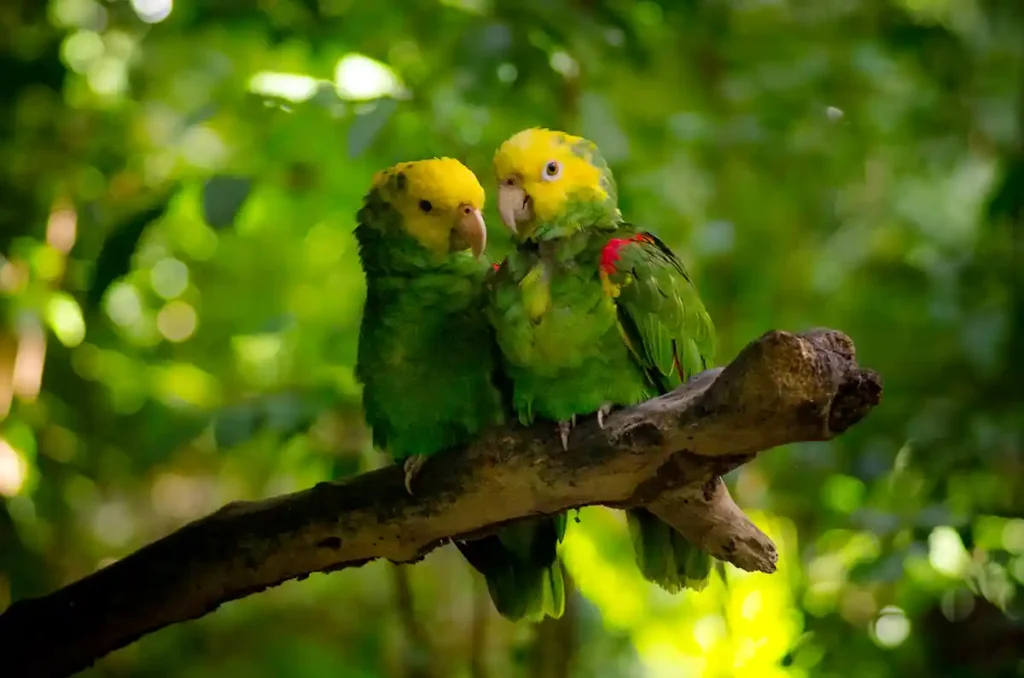
Nutritional Needs and Health Concerns
A balanced diet is critical for the health of a yellow-headed amazon. While they are primarily frugivores, they also enjoy a variety of foods including nuts, berries, and vegetables. Care should be taken to avoid feeding them table scraps which may not be suitable for their dietary needs.
Owners should be vigilant for signs of illness such as weight loss or weight gain. Vitamin A deficiency is a common concern in captive birds and can lead to serious health issues. Regular vet check-ups are recommended to ensure they remain healthy and happy.
Breeding and Lifespan
The yellow-headed amazon typically forms pairs for breeding. The female lays two to four eggs, which she incubates for about 26 days. The chicks, or immatures, stay in the nest for about two months before they are ready to leave.
One thing to note is the long life expectancy of these parrots. With proper care, the yellow-headed amazon can live up to 60 years or even longer in captivity. This makes owning one a serious long-term commitment.
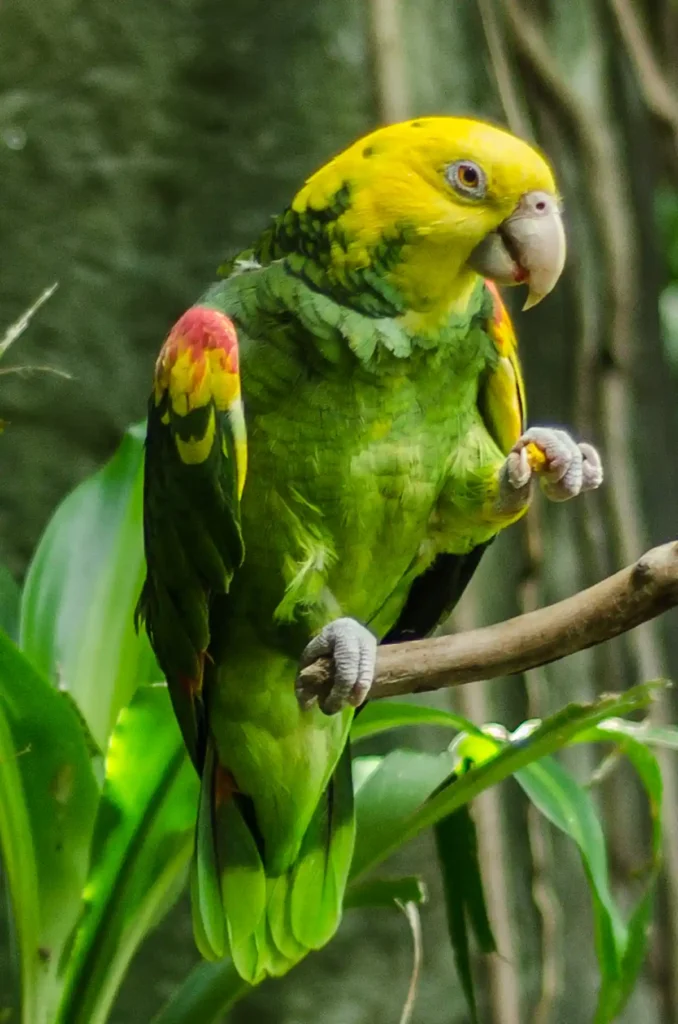
Threats to the Yellow-Headed Amazon
Habitat destruction, often due to deforestation and cultivation practices, is a significant threat to the yellow-headed amazon. These parrots depend heavily on trees for nesting sites and food. When these trees are cut down, the parrots lose their homes and food sources.
Illegal pet trade is another major threat. Despite laws and regulations, many yellow-headed amazons are captured from the wild and sold as pets. This not only depletes the wild population but also often results in poor living conditions for the birds.
Conservation Efforts
Efforts to conserve the yellow-headed amazon are being carried out by various organizations. Captive breeding programs aim to increase the population size without depleting the wild populations. Conservation laws and regulations are being enforced to protect these birds and their habitats.
Education is another crucial part of conservation efforts. By educating the public about the threats faced by the yellow-headed amazon and the importance of conservation, we can all play a part in preserving this beautiful species.

Final Words
The yellow-headed amazon, with its vibrant coloration and complex behaviors, is indeed a fascinating member of the parrot family. However, it is a species under threat and needs our help to survive in the wild.
Whether you are a bird lover, a potential pet owner, or simply someone interested in conservation, understanding the yellow-headed amazon can inspire you to appreciate and protect these wonderful birds. They are not just beautiful to look at, but they also play an essential role in our ecosystem. Let’s do our part in ensuring the survival of the yellow-headed amazon for generations to come.
